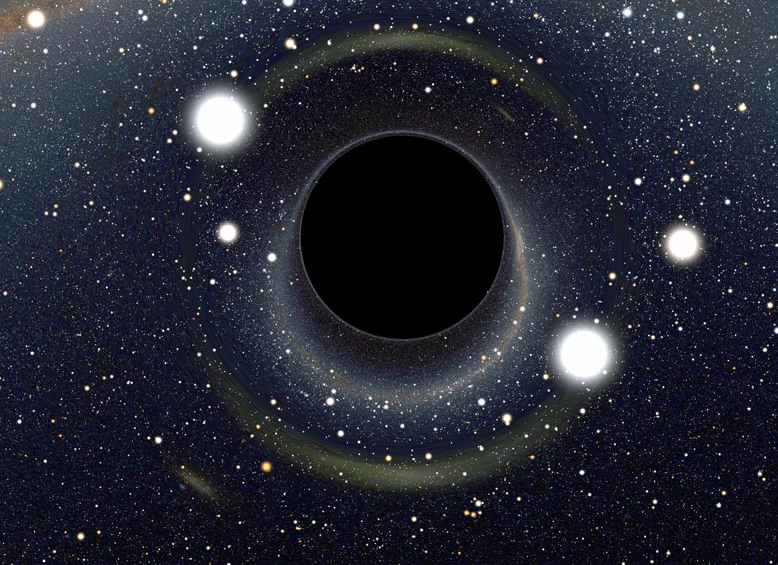A black hole isn't a star-hungry, planet-eating whirlpool that sucks up everything around it like most people believe. It's actually a place in space where gravity pulls with such a force that light can't even escape it. Because light can't get out, black holes are invisible.

An artist's drawing of a large black hole pulling gas from a nearby star.
Credit: NASA E/PO, Sonoma State University, Aurore Simonnet
How Are Black Holes Formed?
Astronomers think black holes are formed within a supernova, which is an exploding star. When a star with about 25 times the mass of the sun ends its life, it explodes. The outer part of the star is blasted into space at high speed, but the core of the star collapses. If there's enough mass, the gravity of the collapsing core compresses it so much that it becomes a black hole, and its mass is much greater than the sun's. This is called a stellar-mass black hole, believed by many astronomers to be a “regular” black hole.

An artist's interpretation of the inside of a black hole.
Because of the strong gravity, light noticeably bends toward the black hole. Credit: Alain Riazuelo/NASA
If Black Holes Are Invisible, How Do Scientists Know They Exist?
Though black holes are invisible since gravity pulls all of the light into the center, they leave visible evidence of their existence. Scientists are able to see how the strong gravity affects the stars and gas around black holes. When a black hole and a star are close together, high-energy light is created, and scientists can see this through satellites and telescopes in space.
If a black hole is consuming matter from a nearby star, that matter gets extremely hot and emits X-rays. Thousands of black holes have been discovered this way.
Could A Black Hole Destroy Earth?
As far as astronomers can tell, we share the Milky Way Galaxy with millions of black holes, but the closest one to Earth is 1,600 light years away. For a black hole to endanger Earth, it would have to be much closer, about less than a light year away.
How is NASA Studying Black Holes?
NASA is using telescopes and satellites traveling in space to learn more about black holes. The Energetic X-ray Imaging Survey Telescope (EXIST) is a proposed NASA satellite that will look at energetic X-rays emitted from black holes, along with other astronomical objects.
For more information on black holes, download the research paper below.
Littelfuse has created a NASA Exploration & Discovery Experience for the engineering community as part of its 2013 Speed2Design program. Winning design engineers will get the opportunity to go behind the scenes to spend time with NASA engineers at two premiere NASA facilities. For more information and to enter, visit speed2design.com.
Advertisement
Learn more about Nasa





